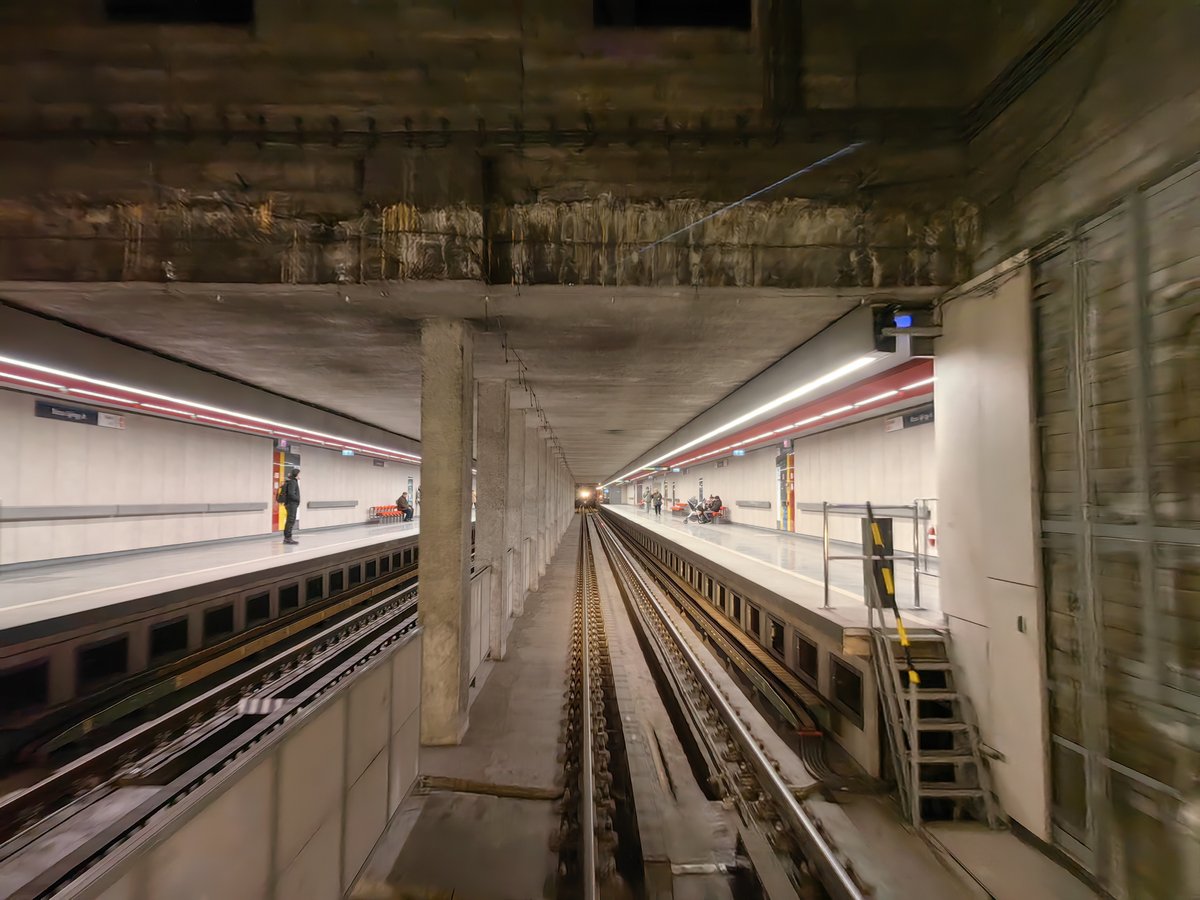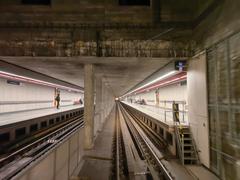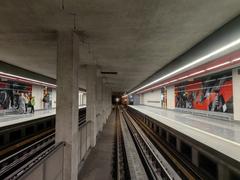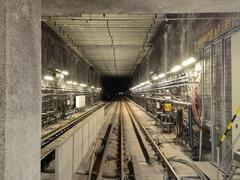
Dózsa György Út Budapest: Visiting Hours, Tickets, and Historical Sites Guide
Date: 15/06/2025
Introduction
Dózsa György Út is a central artery in Budapest, rich in history and culture, connecting visitors to some of the city’s most significant landmarks. Named after the revolutionary leader György Dózsa, the avenue stands as a testament to Hungary’s enduring spirit and evolving identity. This guide offers detailed insights into the avenue’s historical evolution, key attractions, practical travel information, and tips for making the most of your visit.
Historical and Cultural Significance
Origins and Naming
Dózsa György Út was named in honor of György Dózsa, the leader of the 1514 Hungarian Peasants’ Revolt. His legacy as a symbol of resistance and social justice became especially prominent during Hungary’s Communist era, when the narrative of class struggle was central to state ideology. The avenue’s name and stature reflect Budapest’s intertwined political, social, and cultural history (Hungarian Conservative).
Political and Urban Evolution
During the 20th century, Dózsa György Út took on new meaning as a site for state-sponsored commemorations, parades, and public gatherings. Its proximity to Heroes’ Square, a focal point for national remembrance, further cemented its symbolic importance. Post-Communist reinterpretations have nuanced the avenue’s role, acknowledging its layered history while embracing contemporary urban renewal projects like the Liget Budapest Project (Park Atrium).
Architectural Diversity
The avenue features a blend of neoclassical, modernist, and contemporary structures. Highlights include the stately Museum of Fine Arts, the bold and innovative Museum of Ethnography, and modern office complexes such as Park Atrium, which collectively illustrate Budapest’s ongoing dialogue between past and present (Museum of Ethnography).
Key Landmarks and Visiting Information
Museum of Fine Arts (Szépművészeti Múzeum)
- Location: Dózsa György út 41
- Hours: Tuesday–Sunday, 10:00–18:00 (closed Mondays)
- Tickets: Adults ~3,200 HUF, with concessions for students and seniors
- Highlights: European art collections, neoclassical architecture, frequent exhibitions and educational programs
- Accessibility: Wheelchair access, accessible restrooms, and guided tours available
- More Info
Museum of Ethnography (Néprajzi Múzeum)
- Location: Dózsa György út 35
- Hours: Tuesday–Sunday, 10:00–18:00
- Tickets: Adults 3,000 HUF, children (6–18) 1,500 HUF, free for under 6
- Features: Striking modern architecture, grass-covered rooftop, extensive folk culture and world artifact collections, digital guides, museum shop, and café
- More Info
Dózsa György Street Synagogue
- Location: Dózsa György út 55
- Significance: Built in 1909, a testament to local Jewish heritage and resilience
- Access: Not generally open for tours; special visits can be arranged via heritage groups
- More Info
Heroes’ Square (Hősök tere) & City Park (Városliget)
- Location: Intersection of Andrássy Avenue and Dózsa György Út
- Hours: Public square, open 24/7
- Nearby Attractions: Széchenyi Thermal Baths, Vajdahunyad Castle, Budapest Zoo
- Ticketing: Entry to the square is free; museums and baths have individual fees (Prompt Guides)
Ötvenhatosok tere (Square of the 1956 Revolution)
- Significance: Commemorates the 1956 Hungarian Revolution; venue for public events
- Access: Open year-round
Urban Renewal and Cultural Projects
Liget Budapest Project
This ambitious urban renewal plan is transforming City Park and the adjacent Dózsa György Út area into a vibrant nexus of leisure, culture, and education. The project has fostered the development of new museums, green spaces, and sustainable infrastructure, reinforcing the avenue’s role as a cultural and environmental hub (Park Atrium, Green Court Office).
Park Atrium & Modern Offices
A showcase of contemporary architecture and sustainable design, Park Atrium and Green Court Office represent Budapest’s commitment to modern business environments and ecological values (Park Atrium, Green Court Office).
Transportation and Accessibility
Metro
- M1 (Yellow Line): Hősök tere station is ideal for access to the Museum of Fine Arts, Heroes’ Square, and City Park.
- M3 (Blue Line): Dózsa György Út station connects the northern and southern city districts (Moovit).
Bus and Trolleybus
Numerous lines serve the area, including 15, 75, 79, 105, 20E, and others. Stops are located along and near the avenue, providing direct connections to other districts (Moovit).
Cycling
Dózsa György Út is integrated with Budapest’s public bike-sharing system, MOL Bubi. Dedicated bike lanes and docking stations are available near major intersections (Daily News Hungary).
Walking
Wide sidewalks, pedestrian crossings, and proximity to parks make Dózsa György Út pedestrian-friendly, especially around Heroes’ Square and City Park.
Accessibility for All
- Physical: Metro stations and museums are equipped with elevators and ramps.
- Visual/Auditory: Bilingual signage and public announcements are standard.
- Family Friendly: Stroller access and group-friendly public transport options are available.
Practical Visitor Tips
- Ticketing: Single public transport tickets cost 450 HUF; Budapest Card and daily passes offer savings for frequent travel.
- Navigation: Use the BudapestGO app or Moovit for real-time transit updates.
- Safety: The area is safe and well-patrolled; basic urban precautions apply.
- Amenities: Cafés, restaurants, and shops are abundant, especially near City Park and Heroes’ Square. Public restrooms are located in museums and the park.
- Storage: Lockers available at some metro stations and museums.
- Events: Check local calendars for festivals and public gatherings; road closures may occur during large events (Daily News Hungary).
Noteworthy Nearby Attractions
- Andrássy Avenue: UNESCO World Heritage boulevard leading toward downtown Budapest.
- Széchenyi Thermal Baths: Renowned spa complex in City Park.
- Vajdahunyad Castle: Architectural gem within City Park.
- Budapest Zoo: Historic zoological garden, ideal for families.
Frequently Asked Questions (FAQ)
Q: What are typical visiting hours for major attractions?
A: Most museums are open Tuesday–Sunday, 10:00–18:00. Always verify on official websites before visiting.
Q: Is there an entry fee for Heroes’ Square?
A: No, the square is a public space and free to visit.
Q: Are guided tours available?
A: Yes, both museums offer guided and audio tours; private city tours often include Dózsa György Út and nearby landmarks.
Q: Is the area wheelchair accessible?
A: Yes, major sites and metro stations provide full accessibility.
Q: Where can I buy tickets for museums and park attractions?
A: Tickets are available online or at venue entrances.
Visual Highlights
Alt tags include: ‘Dózsa György Út Budapest street view,’ ‘Heroes’ Square Budapest monument,’ ‘Museum of Fine Arts Budapest exterior,’ and ‘City Park Budapest landscape.‘
Summary and Visitor Tips
Dózsa György Út is a living showcase of Budapest’s history, culture, and modernity. From the legacy of György Dózsa’s revolt to the architectural splendor of its museums and the green expanses of City Park, the avenue is an essential stop for any visitor. Its accessibility, wealth of attractions, and dynamic event calendar guarantee a rewarding experience. For the latest updates, ticketing, and personalized itineraries, use digital tools like the Audiala app and consult official sites before your journey. Enjoy discovering one of Budapest’s most storied and vibrant avenues (Hungarian Conservative, Museum of Ethnography, Park Atrium, Daily News Hungary, Prompt Guides).
Further Reading and Sources
- Hungarian Conservative: Dózsa György and Changing Historical Perceptions
- Park Atrium: Modern Office Development
- Museum of Ethnography: Visitor Information
- Museum of Ethnography: Official Page
- Prompt Guides: Museum of Fine Arts
- Moovit: Public Transport Directions
- Daily News Hungary: Traffic and Events










































































































































































